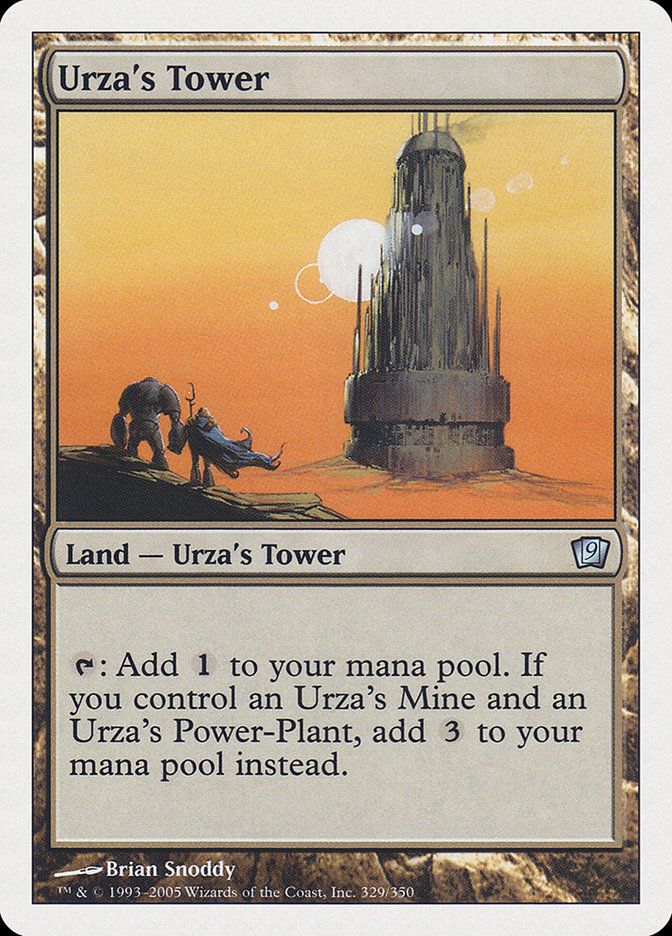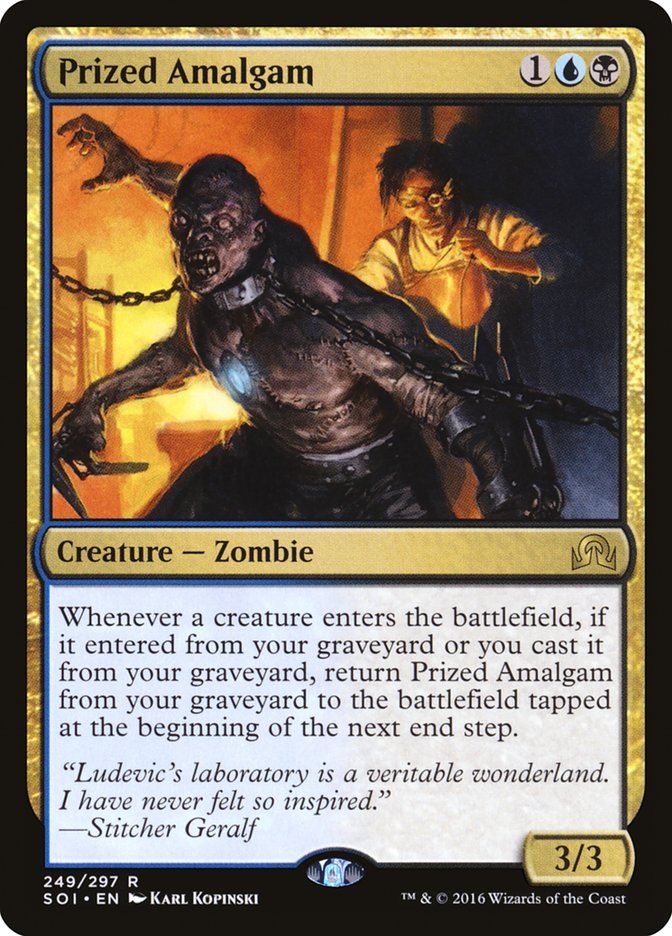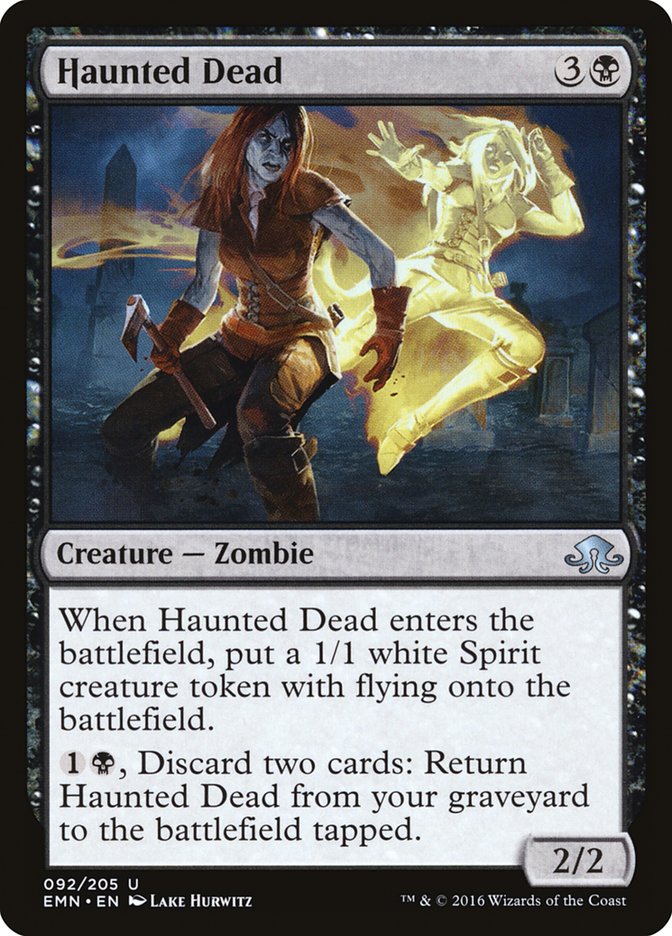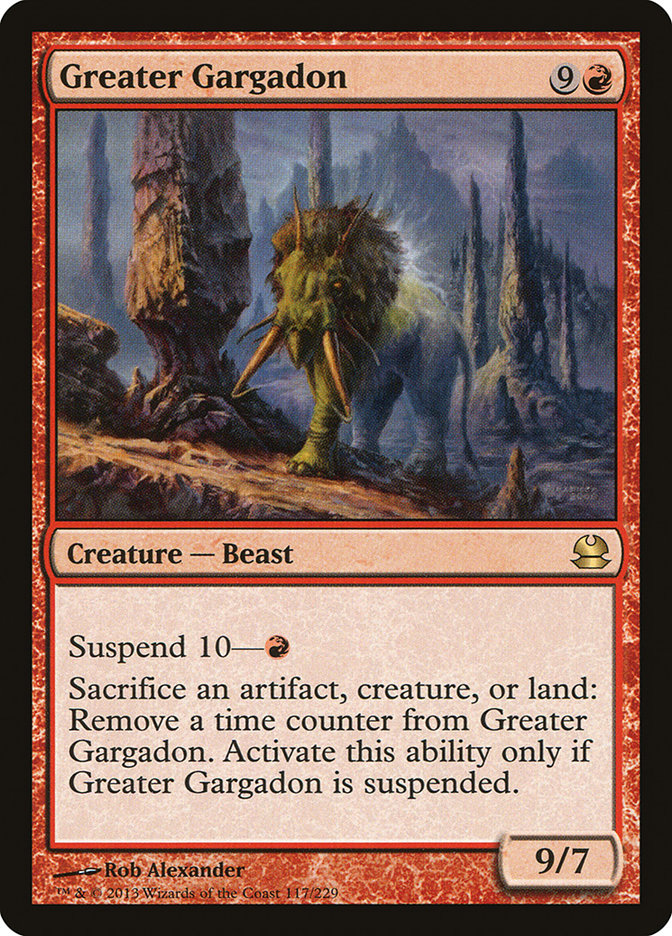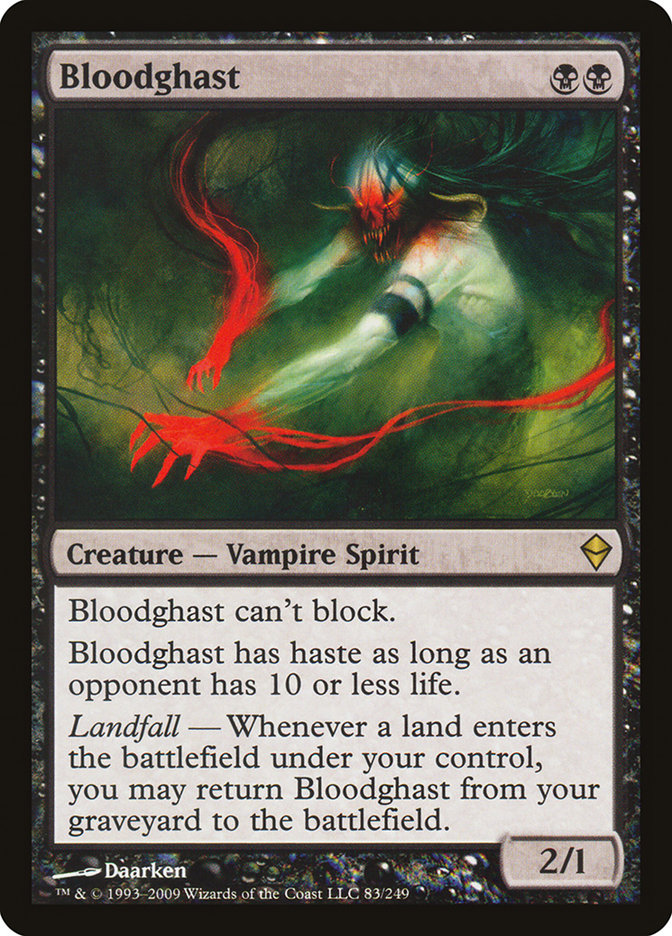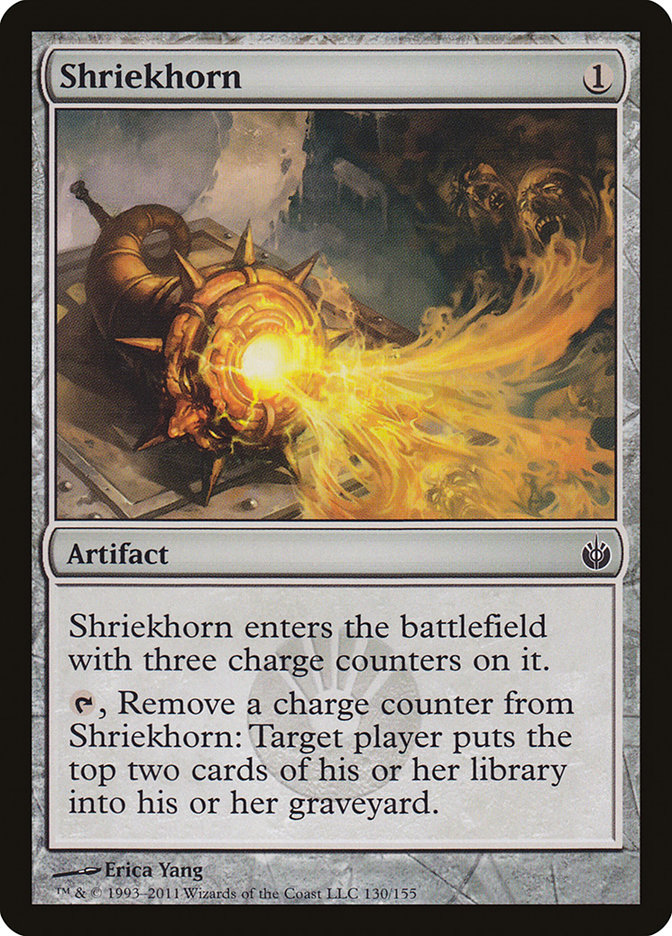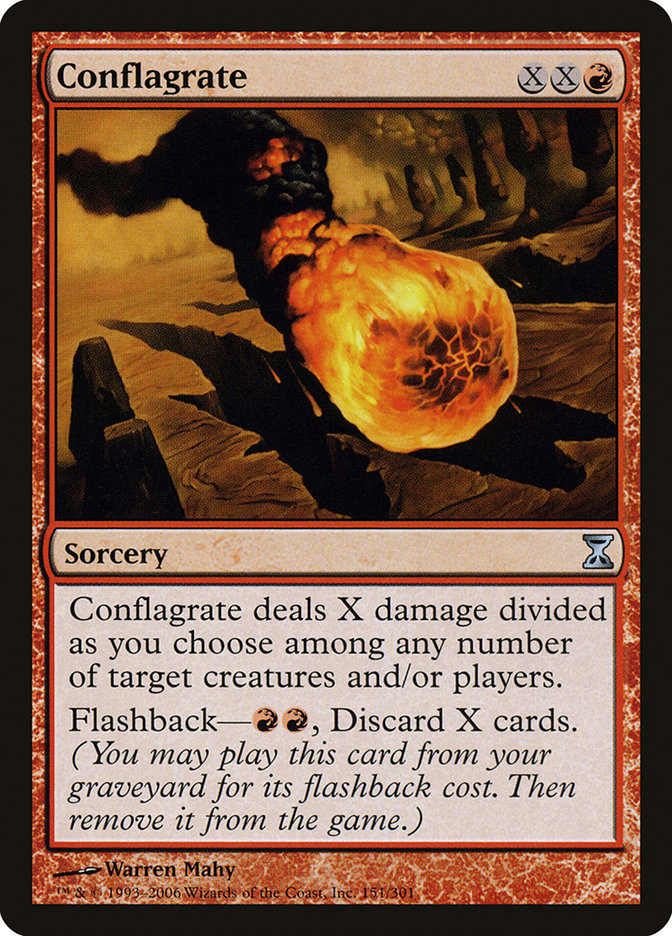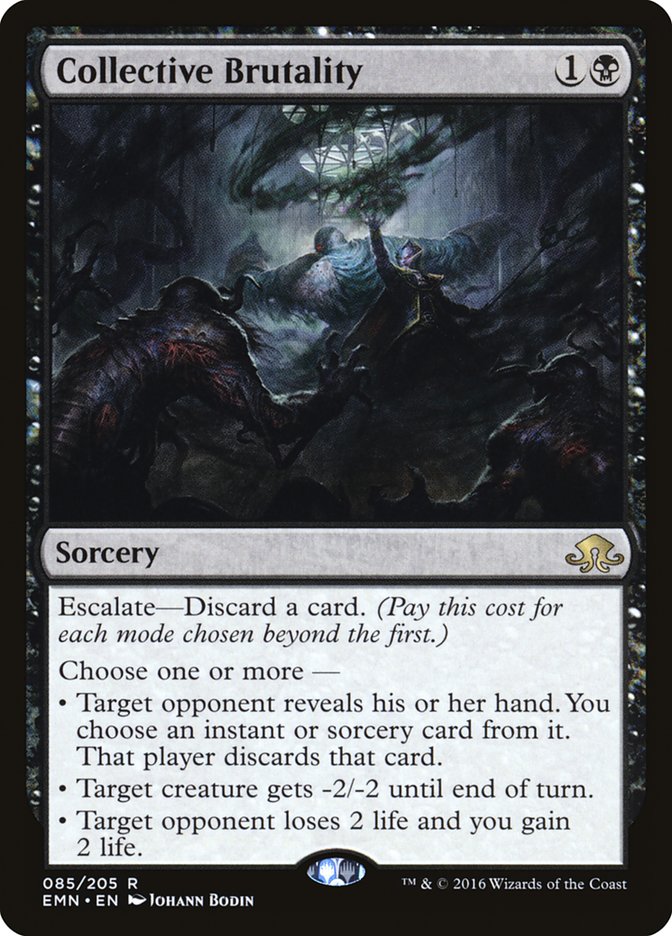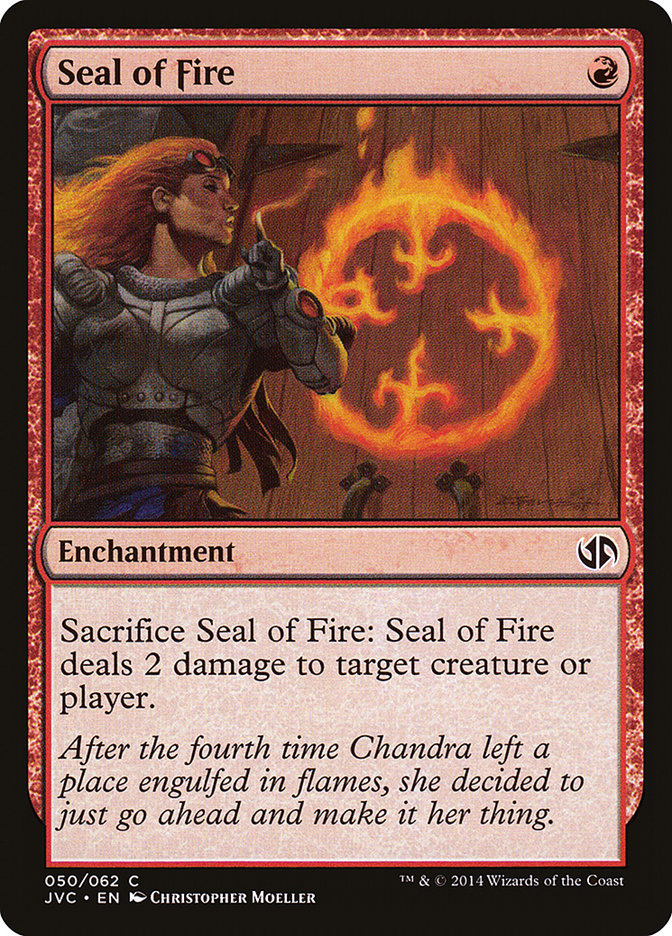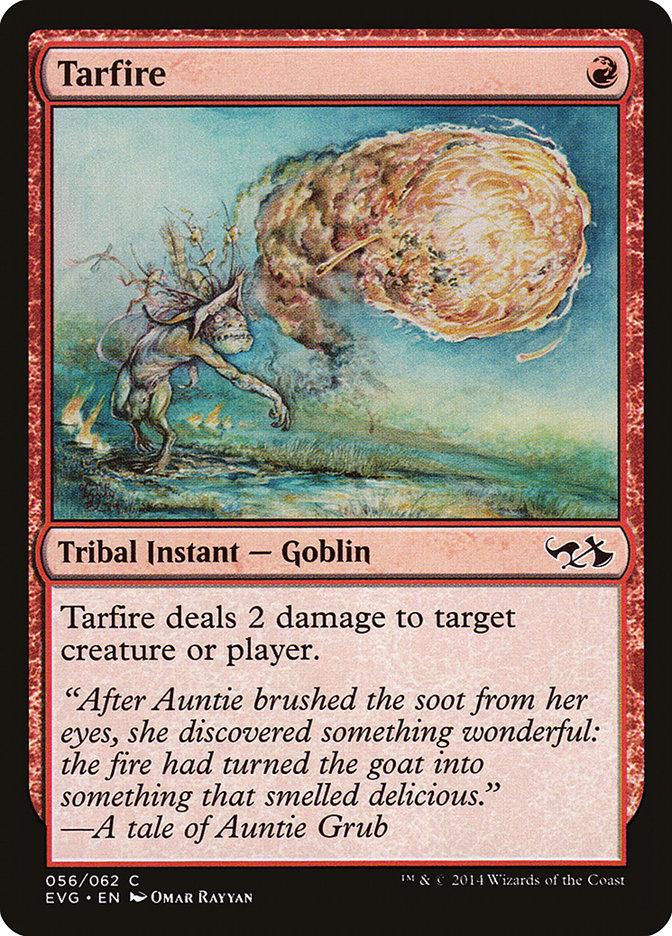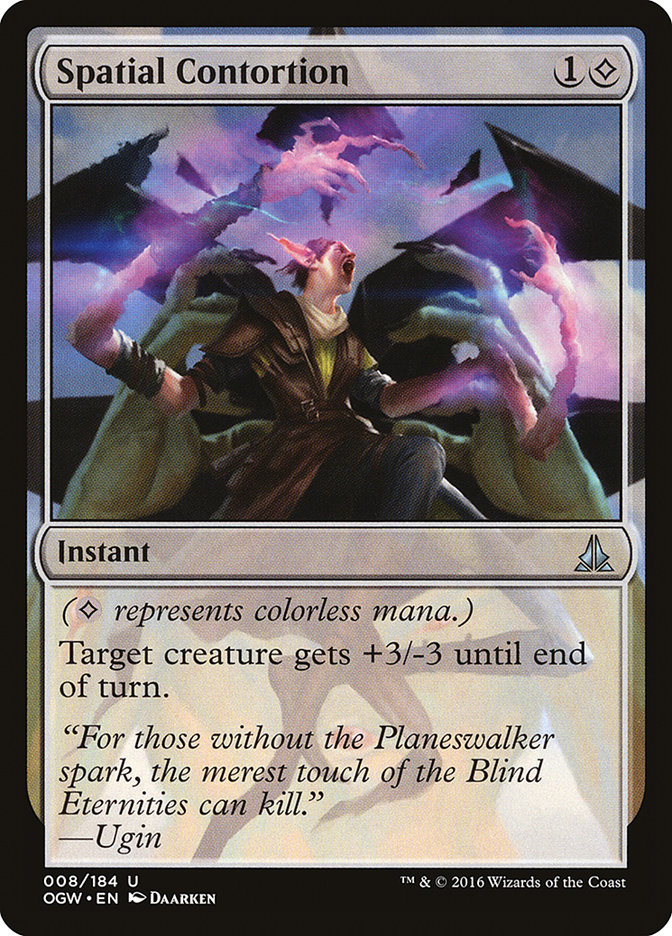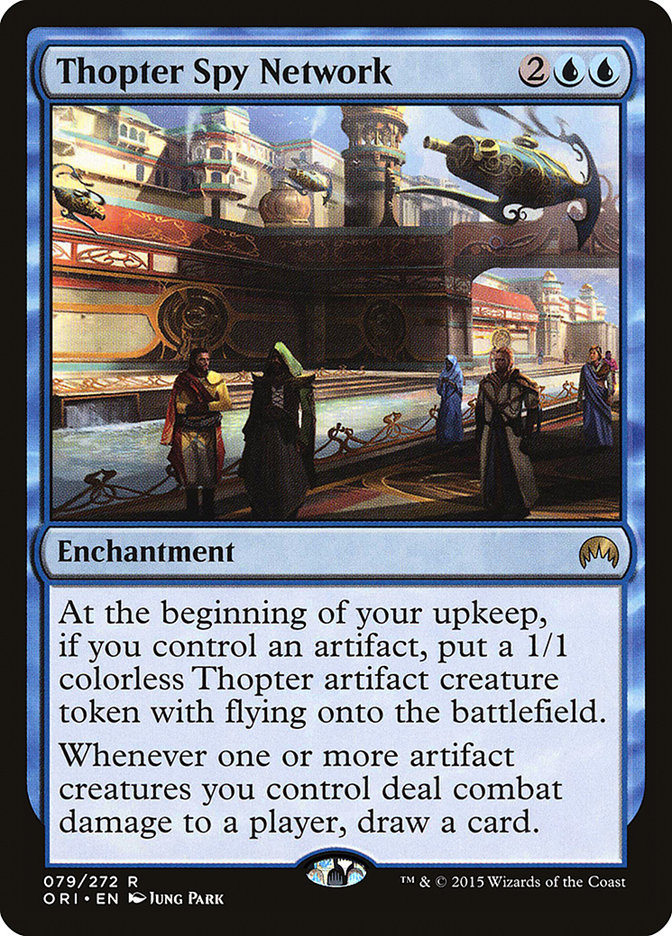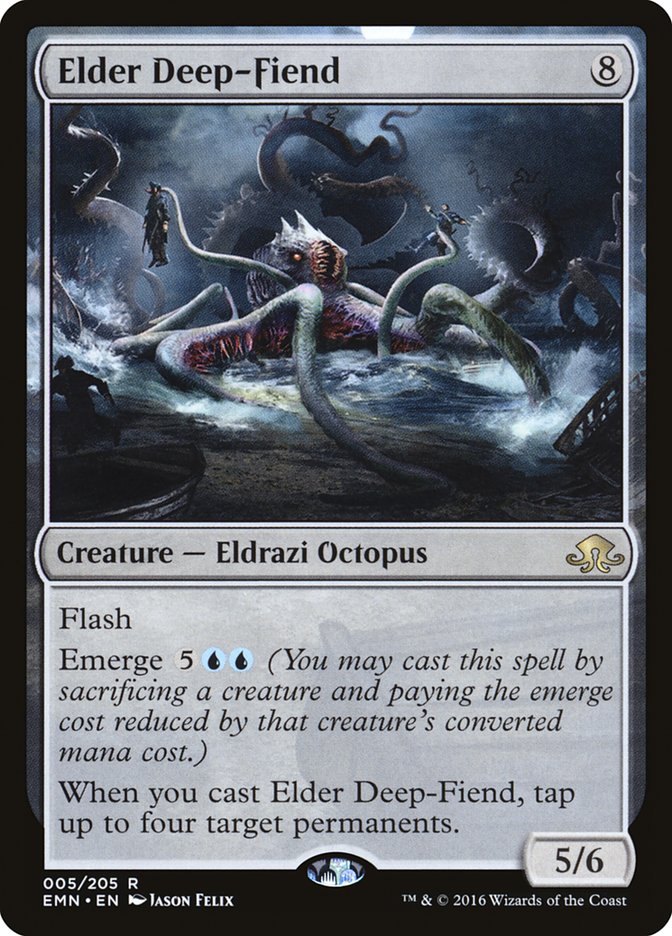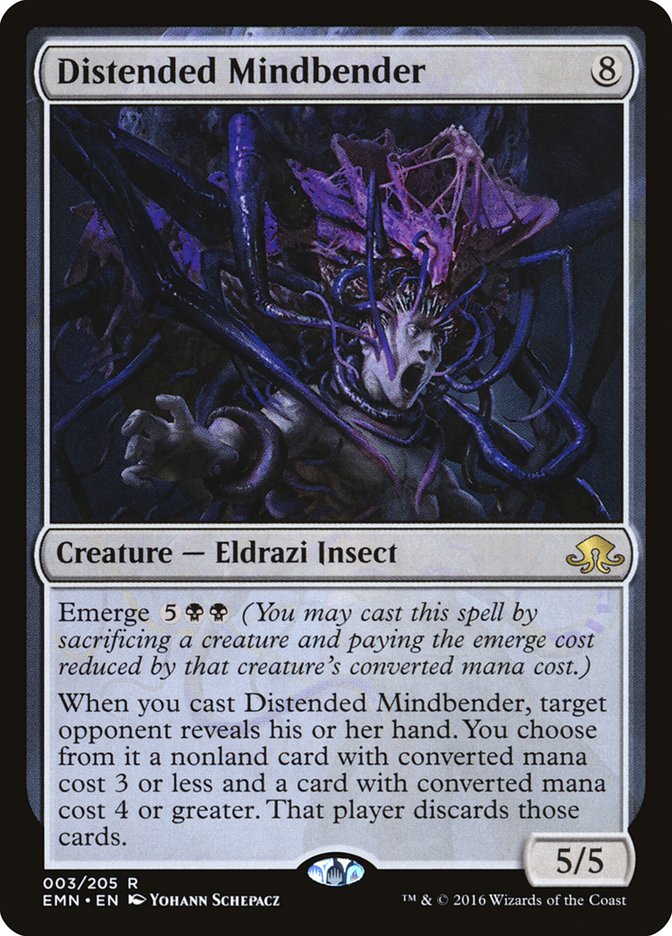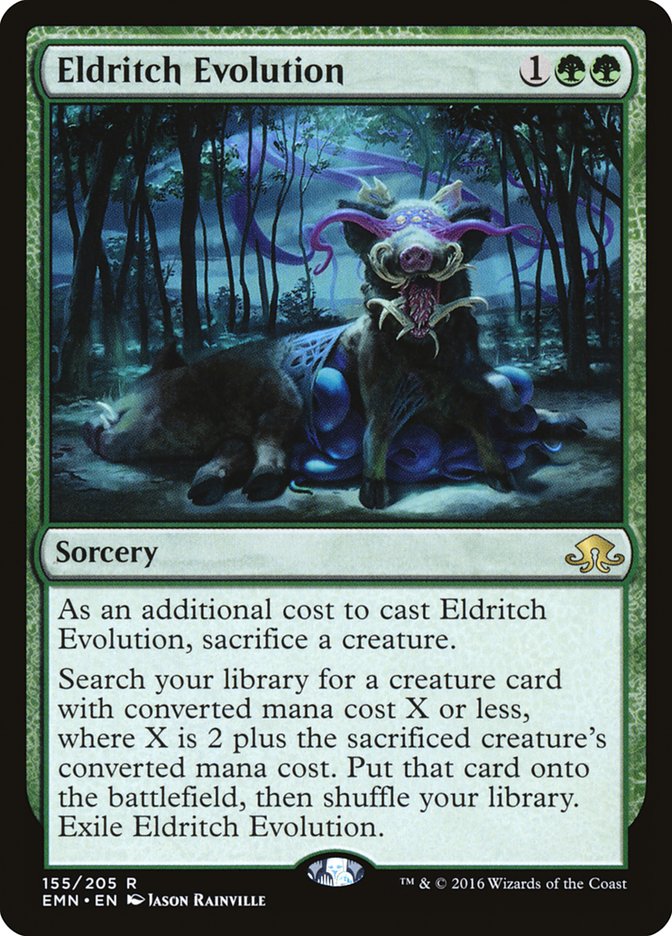Pro Tour Eldritch Moon revealed just how game-changing Eldritch Moon is for Standard. This week in Syracuse, we got our first taste of things to come for Modern. This is one of the strongest sets in a while, and I’ve got a feeling we’re just scratching the surface of the impact we’re going to see as a result of delirium; emerge; Spell Queller; Liliana, the Last Hope; and more.
Let’s start with a high-level look at the Top 32 metagame of #SCGNY, weighted by finish. It’s interesting to note that both of the top-performing archetypes employ Eldritch Moon cards:
|
Archetype |
Top 32 Metagame |
|
Jund |
23.8% |
|
Dredge |
19.0% |
|
R/G Valakut |
9.5% |
|
Infect |
7.9% |
|
Jeskai Control |
7.9% |
|
Burn |
4.8% |
|
Bant Eldrazi |
4.8% |
|
G/W Hatebears |
3.2% |
|
Temur Control |
3.2% |
|
Affinity |
3.2% |
|
Mono-Blue Tron |
3.2% |
|
Misc* |
9.5% |
*Misc = Merfolk, G/R Tron, Abzan, U/R Prison, Jeskai Geist
Modern makes a good GP and SCG Tour® format, particularly when given time to breathe away from a Modern Pro Tour. When left to their own devices, the Modern community has a tendency to play a rich and diverse mix of strategies. Jund and Dredge had a good weekend, awesome, but it’s not like they are dominant week-in and week-out. Besides, these numbers are a far cry from the popularity of Bant Company, for instance. Historically, it’s been primarily right after Modern Pro Tours that the format collapses into undesirable concentration of a couple of strategies.
I love how frequently people are able to brew decks that are whatever style they want and can tune them to a spot where they can actually compete with the netdecks. For instance, how cool is the deck Harrison Gill cashed with?
Creatures (15)
Lands (11)
Spells (34)

Stone Rain? Mwonvuli Acid-Moss? Primal Command? Stormbreath Dragon? Inferno Titan?
Old-school land destruction mixed with Blood Moon (destroy the basics!) in order to buy enough time for a fatty to take over the game? I like your style!
Obviously a deck like this can have some weaknesses to fast combo decks and Burn, but Harrison correctly anticipated a shortage of fast combo decks. In fact, the only combo decks were based on Valakut, the Molten Pinnacle and Urza’s Tower.
Land destruction is an inherently risky strategy in Modern, but Harrison picked a good weekend for it. I also like the use of extra removal and creatures in the sideboard. This let him pull back on the land destruction when he had to face an aggro deck with a low enough curve that he wouldn’t want to be relying on Mwonvuli Acid-Moss, for instance.
These decks can also struggle with fast aggro decks that don’t lose to Blood Moon. Harrison’s list addresses this problem from a clever angle. Instead of trying to fight small battles with stuff like Lightning Bolt, he relies on major blowouts from Bonfire of the Damned, Thragtusk, and Inferno Titan.
Even when the new hotness in Modern is a “known” archetype with some new tech, the result is something cool. Ross Merriam, Tom Ross, and Todd Anderson leading the charge on the major advancement of the Dredge archetype is a perfect example.
Creatures (29)
- 4 Golgari Grave-Troll
- 1 Golgari Thug
- 3 Stinkweed Imp
- 4 Greater Gargadon
- 4 Narcomoeba
- 4 Bloodghast
- 4 Prized Amalgam
- 4 Insolent Neonate
- 1 Haunted Dead
Lands (17)
Spells (14)

Prized Amalgam is no surprise to see showing up in Dredgevine and gives the deck a serious new weapon that helps justify it making a move towards Tier 1 despite being mostly fringe last season. Amusingly, Ross does so by moving away from Vengevine itself.
Prized Amalgam isn’t new to Eldritch Moon (nor Insolent Neonate) and this isn’t the first we’ve seen of it, but there haven’t exactly been a ton of big Modern tournaments. Additionally, Ross has a couple of sweet cards from the new set in addition to some crazy new tech from years past.
Haunted Dead is another card generating action out of the graveyard while also giving us a reliable way to continually discard our dredge cards. Even just playing a single copy opens up a lot of lines of play, since we end up milling so many cards as the game progresses. The key to using it as a perpetual discard outlet is Greater Gargadon:
Greater Gargadon isn’t a common choice for Dredge decks but is actually a really brilliant way to enable Bridge from Below. It’s also at the heart of why this build of Dredge doesn’t use Vengevine. Both Prized Amalgam and Bloodghast jump back onto the battlefield over and over for zero mana. Play a land and all of our Bloodghasts jump out of the graveyard for free. This means our Prized Amalgams are soon to follow. None of these triggers count as playing a creature, however.
Since Greater Gargadon gives us an uncounterable sacrifice outlet, every land we play means another Gargadon counter we can remove and another Zombie we can make from each Bridge from Below. Bloodghast coming back every turn means we can sacrifice and bring back Prized Amalgam every turn (and frequently both on our opponent’s turn and our own).
While Greater Gargadon is a sweet permanent to get onto the battlefield (yeah, 9/7 haste!), we can also sacrifice more permanents than we have counters on the Gargadon, since removing counters is part of the effect, not the cost. In addition to making Bridge from Below tokens, this also lets us sacrifice Stinkweed Imp to start dredging, as well as sacrifice Haunted Dead if we want to trigger it over and over.
Faithless Looting and Insolent Neonate are great ways to jumpstart our dredge engine, but Ross uses Shriekhorn as a one-cost enabler rather than resort to two-mana options like Tormenting Voice. Shriekhorn is not an unheard-of way to start milling yourself but is just about as turbo as it gets. You want to mill as many of your cards as you can for one mana? Shriekhorn mills six for just one mana and doesn’t require blue.
Another one-of bullet for games that drag out, Conflagrate gives us some much-needed reach. The direct damage helps put a game away and provides a little removal in a pinch, not to mention serving as another discard outlet itself. If your Golgari Grave-Troll reveals a Conflagrate, you can discard the Grave-Troll (and the rest of your hand), letting you keep going next turn.
Collective Brutality is a “jack of all trades, master of none” kind of card. It gives us a little disruption against combo, a little removal for creatures that might disrupt us, and a bit of a discard outlet. Unfortunately, it costs two (instead of one or zero, like most of our cards) and it doesn’t work from the graveyard.
Nevertheless, Tom Ross actually went a little further with his use of it in the Dredge list he Top 8ed with, playing one in the maindeck in addition to the one in the side:
Creatures (27)
- 4 Golgari Grave-Troll
- 4 Stinkweed Imp
- 2 Greater Gargadon
- 4 Narcomoeba
- 4 Bloodghast
- 4 Prized Amalgam
- 4 Insolent Neonate
- 1 Haunted Dead
Lands (18)
Spells (15)

Tom’s version also incorporates a minor Life from the Loam sub-theme, generally slanting a little more towards grinding in attrition wars and being less “turbo go-off.”
Ryan Koven’s Top 16 list is also very similar but uses the aforementioned Tormenting Voice instead of Shriekhorn:
Creatures (25)
- 4 Golgari Grave-Troll
- 4 Stinkweed Imp
- 4 Narcomoeba
- 4 Bloodghast
- 4 Prized Amalgam
- 4 Insolent Neonate
- 1 Haunted Dead
Lands (18)
Spells (17)

Tormenting Voice with Life from the Loam leads to a lot more games with a ton of extra cards in hand, so Ryan’s build makes much more pronounced use of Conflagrate to capitalize on all the material.
While Ross took home the trophy with Dredge, the biggest deck of the weekend was probably Jund. The highest-finishing Jund player was Chris Andersen, armed with Liliana, the Last Hope.
Liliana, the Last Hope has the same type and cost as one of the best cards in Modern, Liliana of the Veil, so the bar is extremely high. Still, the new Liliana helps contain creatures, fill our graveyard, and lead to card advantage in the mid-game (not to mention a rapidly approaching ultimate that can quickly end a game).
Creatures (13)
Planeswalkers (4)
Lands (23)
Spells (20)

Liliana, the Last Hope is fine here, but I think we haven’t yet seen the best home for the card. I can’t help but wonder about using Liliana, the Last Hope to get back Snapcaster Mage…
While Andersen’s list doesn’t stray too far from the pre-Eldritch Moon world, Mac Schrantz Top 8ed with a version that utilizes Grim Flayer as an additional Tarmogoyf meets Dark Confidant.
Creatures (14)
Planeswalkers (4)
Lands (23)
Spells (19)

Achieving Delirium in Modern is super-easy. Fetchlands and Raging Ravine mean land is nearly free, and Lightning Bolt / Terminate plus Thoughtseize / Inquisition of Kozilek means we’re just one away almost immediately. Must-kill creatures and planeswalkers like Dark Confidant and Liliana of the Veil finish the puzzle quickly. Besides, Liliana can just discard a missing type, to say nothing of Grim Flayer actually connecting and milling whatever’s missing. It’s also kind of cool that Grim Flayer can actually provide food for Scavenging Ooze or power up our Tarmogoyf.
Ryan Hare actually pushed the Grim Flayer angle even harder, using a full playset:
Creatures (12)
Planeswalkers (4)
Lands (23)
Spells (21)

Once we have a full playset of Grim Flayers, I love the use of Seal of Fire to help smooth out the delirium draws. Besides, it’s another type for Tarmogoyf and just a good card in its own right.
Of course, why stop there?
Check out Jacob Wilson’s Jund deck that uses one Tarfire, one Seal of Fire, and one Mishra’s Bauble, in order to maximize his Grim Flayers the fastest, on his way to a first-place finish in this past weekend’s MOCS:
Creatures (11)
Planeswalkers (4)
Lands (23)
Spells (22)

While Jund and Dredge were the two most immediate big gainers from this weekend, a few other decks put new technology to use, adjusting to the changing texture of Modern. For instance, Andrew Wood’s Mono-Blue Tron deck leans into Treasure Mage, Fabricate, and Tolaria West in order to fill in the void left by Eye of Ugin getting banned.
Creatures (5)
Planeswalkers (1)
Lands (18)
Spells (36)

Mindslaver, Sundering Titan, and Wurmcoil Engine are recursive threats that give Andrew strong late-game inevitability, not to mention the possibility of a Spell Burst lockout. Additionally, Wood’s list makes excellent use of Spatial Contortion, giving him a more efficient removal spell than Mono-Blue has traditionally had access to.
Lots of counterspells alongside lots of lock components make this a substantially more disruptive Tron deck than most. One of the most compelling parts of the disruption package is Chalice of the Void.
Even with just two copies of Chalice of the Void, Andrew has a lot of ways to access them, letting him relatively reliably set one up eventually. The big limiting factor with Chalice of the Void is usually how much everyone just wants to use one-drops themselves. Tron is definitely one of the best archetypes for naturally avoiding them, particularly when you aren’t playing green for Ancient Stirrings.
Similarly, Seth Deluca’s U/R Prison deck relies heavily on Chalice of the Void and even goes a step further, playing Ensnaring Bridge and Blood Moon for even more locking out.
Creatures (12)
Planeswalkers (2)
Lands (15)
Spells (31)

Talk about an annoying deck to play against! One really amazing part of the deck is the use of Thopter Spy Network for helping grind out the Jund decks.
I love how durable Thopter Spy Network is. Not only does it dodge Lightning Bolt and Terminate, it avoids Abrupt Decay and Inquisition of Kozilek. The advantage it generates is slow, but it is steady and will eventually overpower a lot of midrange decks. Amusingly, Grim Flayer’s trample comes up in a big way against it!
While Grim Flayer is the most appealing Delirium card for Modern, I can’t help but wonder if Gnarlwood Dryad might have a place in the format.
Creatures (20)
Lands (17)
Spells (23)

It’s so easy to get delirium in Modern, Gnarlwood Dryad might just be Wild Nacatls five through eight. Once we’ve gone this far, however, are we just supposed to be making room for Grim Flayers as well? We don’t have to be a Goblin Guide / Monastery Swiftspear all-in aggro deck. Is there a happy compromise between Jund with Grim Flayer and Zoo with Gnarlwood Dryad that gets the best of both worlds?
I also feel like there is a lot of brewing to be done with Emrakul, the Promised End; Elder Deep-Fiend; and Distended Mindbender. These are powerful effects, and there is so much more opportunity for abuse in Modern than in Standard.
Emerge cards are particularly interesting with all of the alternate-cost and mana-cheat mechanics available in Modern. For instance, Tasigur, the Golden Fang lets us cast Distended Mindbender for just two mana. Frogmite plays Elder Deep-Fiend for three. Allosaurus Rider plays Decimator of Provinces for two.
Is Eldritch Evolution the key…?









